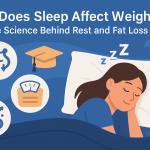How a Newborn Should Sleep in a Crib: Safe Sleep Guidelines for New Parents
Ensuring your newborn sleeps safely is one of the most critical responsibilities for new parents. Safe sleep practices can dramatically reduce the risk of Sudden Infant Death Syndrome (SIDS) and other sleep-related incidents. This comprehensive guide explains exactly how a newborn should sleep in a crib, covering best practices, expert recommendations, and practical tips for setting up a safe and comfortable sleep environment.
Why Safe Sleep Matters for Newborns
According to the American Academy of Pediatrics (AAP), proper sleep practices are essential for protecting babies from SIDS, accidental suffocation, and other sleep-related injuries. Newborns spend most of their early months sleeping, making it crucial to understand and implement safe sleep guidelines.
Ideal Sleep Position for Newborns
Back is Best: The Recommended Sleep Position
The safest sleep position for newborns is on their backs for every sleep—nighttime and naps alike. Placing babies on their backs helps keep their airways clear and greatly reduces the risk of SIDS.
- Never place your baby to sleep on their stomach or side.
- Once your baby can roll over independently, it’s okay to let them find their own sleep position, but always start them on their back.
- Supervised tummy time is important for development, but only when your baby is awake.
Crib Setup for Maximum Safety
Choose a Safe and Sturdy Crib
Use a crib, bassinet, or portable play yard that meets current safety standards. Avoid using drop-side cribs or any crib with broken or missing parts.
- The mattress should be firm and fit snugly within the crib frame.
- Slats should be no more than 2 3/8 inches apart to prevent the baby’s head from getting trapped.
- Avoid using homemade cribs or cribs older than 10 years.
Proper Bedding and Accessories
Babies should sleep on a firm, flat mattress covered by a fitted sheet. Keep the sleep space clear of pillows, blankets, toys, bumpers, and loose bedding.
- No stuffed animals or loose items in the crib.
- No crib bumpers, sleep positioners, or wedges—they increase the risk of suffocation and strangulation.
- If extra warmth is needed, use a wearable sleep sack or swaddle—never loose blankets.
Swaddling: Is it Safe?
Swaddling can help soothe newborns, but it must be done correctly. Always place a swaddled baby on their back, and stop swaddling as soon as your baby shows signs of rolling over. Ensure the swaddle is snug around the chest but loose around the hips and legs to allow for healthy development.
Room Sharing vs. Bed Sharing
Room Sharing: The Safe Choice
The AAP recommends that infants sleep in the same room as their caregivers—ideally on a separate, safe sleep surface like a crib or bassinet—for at least the first six months, and preferably for the first year.
- Place the crib or bassinet next to your bed for convenience and peace of mind.
- Never share a bed, couch, or armchair with your baby while sleeping—bed sharing is associated with a higher risk of SIDS and suffocation.
Temperature and Sleepwear: Keeping Baby Comfortable and Safe
Ideal Room Temperature
Overheating increases the risk of SIDS. Keep the room at a comfortable temperature for a lightly clothed adult, usually between 68–72°F (20–22°C).
- Dress your baby in one more layer than you would wear.
- Avoid hats or beanies while indoors and sleeping to prevent overheating.
Safe Sleep Clothing
Use sleep sacks or wearable blankets instead of loose blankets. These provide warmth without the suffocation hazard. Ensure your baby’s head remains uncovered during sleep.
Additional Tips for Safe Newborn Sleep
- Avoid smoking around your baby, as exposure increases SIDS risk.
- Breastfeeding is associated with a lower risk of SIDS.
- Offer a pacifier at naptime and bedtime once breastfeeding is established (usually around 3–4 weeks), as it may reduce SIDS risk.
- Ensure regular prenatal care during pregnancy and pediatric checkups after birth.
- Keep up with your baby’s vaccinations, as these are linked to a lower risk of SIDS.
Frequently Asked Questions
Can my baby sleep on their side?
No, side sleeping is not safe for newborns. Babies placed on their sides are more likely to accidentally roll onto their stomach, which increases the risk of suffocation and SIDS.
What if my baby spits up while sleeping on their back?
Healthy babies naturally turn their heads to the side if they spit up, and sleeping on their back does not increase the risk of choking. In fact, back sleeping is safer for all babies, including those who spit up frequently.
When can my baby use a pillow or blanket?
Wait until your child is at least 12-18 months old before introducing pillows, blankets, or stuffed animals. Before this age, these items pose a suffocation hazard.
How often should I check on my sleeping baby?
It’s natural to feel concerned, but you don’t need to check on your baby constantly if you’ve set up a safe sleep environment. Use a baby monitor if you prefer, but prioritize your own rest as well.
Summary: Safe Sleep Checklist for Newborns in a Crib
- Always place your baby on their back to sleep.
- Use a safe, firm, and clutter-free crib with a tight-fitting sheet.
- No pillows, blankets, toys, or crib bumpers in the sleep space.
- Share your room, but not your bed, with your baby.
- Monitor the room temperature and dress your baby appropriately.
- Follow expert guidelines for swaddling and sleepwear.
- Stay informed and trust your instincts for your baby’s safety and comfort.
By following these safe sleep recommendations, you help give your newborn the safest possible start and peace of mind for your growing family.


